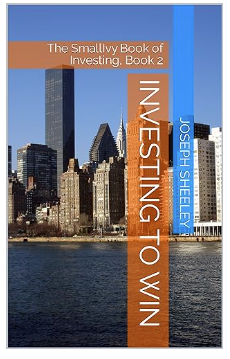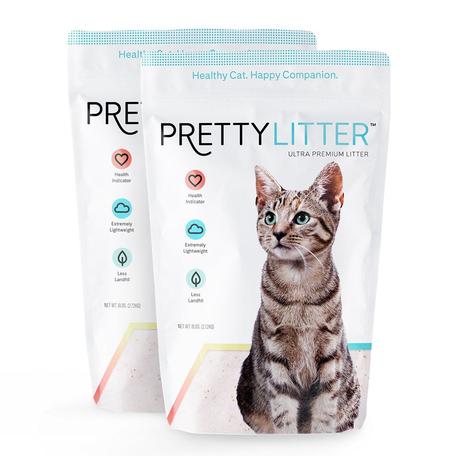
If you’ve spent anytime at all on X in the FinTwit world, you’ve probably found some people telling about all of the abundant money they’ve made buying options and then selling them a week to a month or two later for a big profit. You definitely can make a lot of money quickly using options. When you buy an option, you are using a large amount of leverage. This makes small moves in the price of the stock cause huge moves in the price of your option. Still, the chances of making money long-term with options is very low. The odds are stacked against you by the design of the markets. In this article, I discuss why.
(Note, this site contains affiliate links. As an Amazon Associate I earn from qualifying purchases. When you click on an affiliate link and buy something, The Small Investor will get a small commission for the referral. You are charged nothing extra for the purchase. This helps keep The Small Investor going and free. If you like this article or the many others available for free on this site, please think about visiting Amazon through this link and buy something you need anyway. The Small Investor will get a small commission when you do, again at no cost to you.)
What are options?
There are two basic types of options, calls and puts. These are both legal contracts that allow the buyer to force the person selling the option to them (called the writer) to do something. In the case of a call option, the buyer can force the call writer to sell him shares of a particular stock at a specified price (the strike price) before a specified date (the expiration date). A put is exactly the opposite where the put buyer can force the put writer to buy shares of a stock from him at a specified strike price before a specified expiration date.
In exchange for agreeing to sell or buy the shares from the buyer, the option writer receives a fee called a premium. The writer gets to keep the fee regardless of whether the option buyer uses the option or not. And it is totally at the buyer’s discression (option) whether the option is used (exercised) or not. Unless the option buyer directs his brokerage to exercise the option before it expires, it expires worthless and the writer keeps the premium. No shares are traded.
I’ve been investing for more than 40 years. In that time, I’ve learned a lot about what to do and what not to do. I’ve refined it all down into what I call the “Investing to Win Method.” I’ve put it all in my newest book, Investing to Win. Whether you’re a new investor or someone who is really not getting the kind of returns you desire, you can benefit greatly from reading this book.

Investing to Win
Who comes up with the premium price?
So, who comes up with the premium price that the option buyer pays to the option seller/writer? Well, in theory, it is the option writer. He decides how little he is willing to take for the chance of needing to sell (or buy) the shares. But there is also a market that lists what the options are selling for at a given moment. This includes what they sold for last and what price someone is wiling to pay for (the bid price) and sell (the ask price) an option for at the current time. The difference between these two prices is call the spread, and is a cost options traders pay right off the bat when they buy or sell an option.
Because there are people from large trading houses in the options markets, and because these people use sophisticated trading analyses to determine what they are willing to pay, the prices for options gets optimized. This means that the sales price will usually be the minimum someone can sell the option for and make enough money to justify the risk being taken. This is the price they are likely to make more money selling the option to you at than they are going to make holding the stock during the period between today and when the option expires. There is a formula for which some economists won the Nobel prize called the Black and Scholes formula that is often used. (The economist were named “Black” and “Scholes,” obviously.)
Do you know how to select mutual/index funds to maximize your returns? If you’d like a little guidance, check out Sample Mutual Fund Portfolios . This gives sample portfolios you can use for reaching all sorts of different goals, including retirement.

So, what’s the issue?
OK, so the price is optimized. What’s wrong with that?
Well, if you’re an options buyer, the price being optimized means that the person selling you the option is much more likely to make money by selling you the call or put than you are by buying it. Yes, you can make a lot of money buying options, but the amount of money you’re likely to make is figured into the price of the options. The seller is likely to make more money from the premium than he is going to lose by your exercising the option. The market process sets the price at this level.
Can you make money buying options? Sure. But the odds are against you. Just like playing roulette in Las Vegas, you can make money sometimes if you get lucky, but the more you play, the more you’ll lose. Time is against you and on the side of the option seller. It isn’t like buying stocks and holding them where you can just wait for the market to turn around. You need to be right before expiration date or you lose it all. Most of the time the option seller will just keep your money. It is estimated that 90% of options expire worthless. This means you’ll lase about 90% of the time.
In addition, the taxes and fees are against you. When you make money, you’ll pay taxes and it is a short-term gain, meaning the taxes might be 20%, 30%, even 40% or 50%. You’ll also pay fees to buy and sell the options whether you make money or not. These fees eat away at your gains and increase your losses.
We actually use Pretty Litter and really like it. The bags are light and delivered right to your door. There is no odor. Clean-up is a breeze, just a few seconds a day. And rather than dealing with clumps from urine, is just gets absorbed into the litter and you just change out the liter every few weeks. It even changes colors if you cat has an issue so you can get them checked out!
Give it a try! Click on the picture below to get started and support The Small Investor when you do.

The right way to use options
So, are there times where you should buy an option? Sure. Options were originally intended as an insurance policy. You would buy a call option in a situation where you were short a stock just in case you were wrong and the stock shot up. For example, if you went short 1000 shares of XYZ corporation at $50 per share, you could probably buy a set of 10 call options that expired in a few months with a strike price of $60 for about $1.50 per option, or $1500 total. If the stock shot up to $100 within the next three months, you’d just use the call options and buy back the stock to cover the short at $60, cutting your loss to $10,000 (plus $1500 for the option premium). If you were right and XYZ fell to $30, you would just let the option expire and collect $20,000 minus the $1500 premium.
If you have shares that were way up, but you thought they could go higher, you might buy put options. This would allow you to continue to hold the stock and profit if the shares continued to go higher. If something happened where the stock fell dramatically, however, you could just exercise the put and sell the shares to some poor trader who wrote the put. Using options for their legitimate purpose, rather than trying to make money trading them, does what they were meant to do: reduce your risk.
Need a good primer on the basics of stocks and bonds, along with other types of investments? Check out SmallIvy Book of Investing: Book1: Investing to Grow Wealthy

Follow me on Twitter to get news about new articles and find out what I’m investing in. @SmalllIvy_SI
Disclaimer: This blog is not meant to give financial planning or tax advice. It gives general information on investment strategy, picking stocks, and generally managing money to build wealth. It is not a solicitation to buy or sell stocks or any security. Financial planning advice should be sought from a certified financial planner, which the author is not. Tax advice should be sought from a CPA. All investments involve risk and the reader as urged to consider risks carefully and seek the advice of experts if needed before investing.
